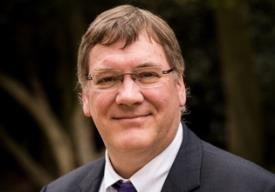| Smart Soil Functionality Under Changing Climate |

|
Global Soil Threats and Pathways to Regenerative Land Use for Agriculture
An NLAE USDA-ARS / ISU joint invited seminar
19 October 2022, 1:30 PM Central
2432 Food Sciences, ISU (coffee and cookies!)
ZOOM: https://iastate.zoom.us/my/triffid

Prof. Steve Banwart, University of Leeds, United Kingdom
Dean for Global Development
Director, Global Food and Environment Institute
Leadership Chair in Integrated Soil / Agriculture / Water Research
In the period from 2010 to 2050 human population is projected to reach nearly 10 billion people with a quadrupling in the global economy. The growth in population and wealth has a profound impact on use of global soil, water, energy and biomass resources with an expected doubling in demand for food and fuel and more than 50% increase in demand for clean water. The required land area for food production is projected to increase beyond Earth’s environmental capacity by 10-45 %. Food supply currently produces one-third of anthropogenic greenhouse gas (GHG) emissions with 70% coming from agriculture, which along with transport and manufacturing is one the three most challenging sectors to decarbonise. Farming will rapidly need to transition to practices with a dramatically lower draw on primary resources of energy, nutrients and water. Central to this challenge is a far more proactive management of soil resource to increase their capacity to deliver key soil functions. These functions provide and transform the nutrient supply for plant productivity, store and transmit water, filter pollutants out of infiltrating recharge, store carbon and nitrogen to prevent their release as GHGs, support habitat and sustain microbial biodiversity. Development of these soil functions correlates positively with the development of improved soil structure. This term refers to the internal porosity architecture of soil as the vital porous interface between geosphere, atmosphere, hydrosphere and biosphere. New mechanistic descriptions of soil structure dynamics are translated into computational models to calculate how land use and farming practices alter soil structure and how these changes impact soil functions. These methods have the potential to contribute design tools to guide positive interventions in soil management that aim to protect, restore and enhance soil functions. What is clear is that as people demand more from soil resources, it will be essential to maintain food supply while reducing climate change impacts and other adverse environmental outcomes. This talk will argue, based on results from recent research projects, that along with IT infrastructure developments, computational modelling plays an increasing and vital role in translating science evidence that can accelerate positive transitions in farming.
About Professor Banwart:
Steve Banwart grew up on the Iowa side of Pool 18 on the Mississippi River and graduated from Mediapolis High School. He received a BSc in Civil and Environmental Engineering and an MSc in Environmental Engineering at the University of Iowa. His core science is chemistry and he received his PhD in Natural Environmental Sciences from the Swiss Federal Institute of Technology – Zurich. His current research is on protecting and enhancing soil functions through soil carbon management and the recovery of water and nutrient resources for use in soil improvement within a sanitation-agriculture circular economy. He is a founding partner of the Leverhulme Centre for Climate Change Mitigation, working on the demonstration and scale up of enhanced weathering of basalt rock dust applied to agricultural land as a GHG negative emissions strategy. In addition to being a native son of Iowa, he is an adopted son of Yorkshire in the North of England.

